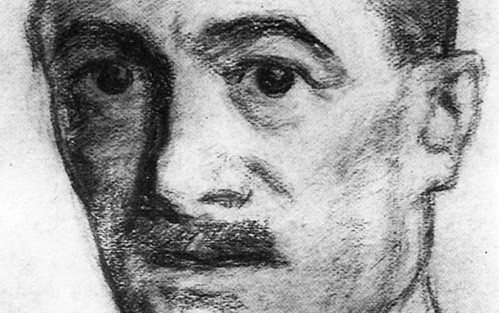
Albin Egger-Lienz (1868-1926)
Ingenuin Albuin Trojer, later to turn into the painter Albin Egger-Lienz, is born in the village of Stribach, near Doelsach in East Tyrol. He receives his initial artistic training from his father, a church painter and photographer. After that, he enrolls at the Munich academy, where he maked the acquantance of Franz von Defregger, who becomes a strong artistic influence. Additionally, Ferdinand Hodler and Jean-François Millet become important role-models.
Even as a child, Egger-Lienz is very susceptible to religious sentiment; rural life, under the harsh conditions of the time and structured by Catholicism, becomes the main theme of his work as an artist. In 1899, Egger-Lienz and his wife move to Vienna, where they stay until 1911. In 1911, he accepts a position as a professor at the Großherzoglich-Sächsische Hochschule für Bildende Künste Weimar/Grand Ducal Saxon College of Fine Arts Weimar; a chair at the Viennese Academy he declines in 1918.
Egger-Lienz' Viennese experience is ambiguous. On one hand, this is where he created his crucial work "Totentanz"/Danse Macabre, which was presented at the Viennese Künstlerhaus, on the other hand the ambiguous reactions to this painting resulted in a buying ban imposed by the Heir Apparent, and Egger-Lienz received no further public commssions. During World War I, he worked as a war painter. The four war years had a lasting impact on him. In 1918, he moved to South Tyrol for good.
Egger-Lienz's body of work comprises above all religious themes, rural scenes, events of the Tyrolean freedom struggle of 1809, and the horror of war in general. Influenced by Hodler, Egger-Lienz succeeds in simplifying his formal language in monumental expressiveness.


